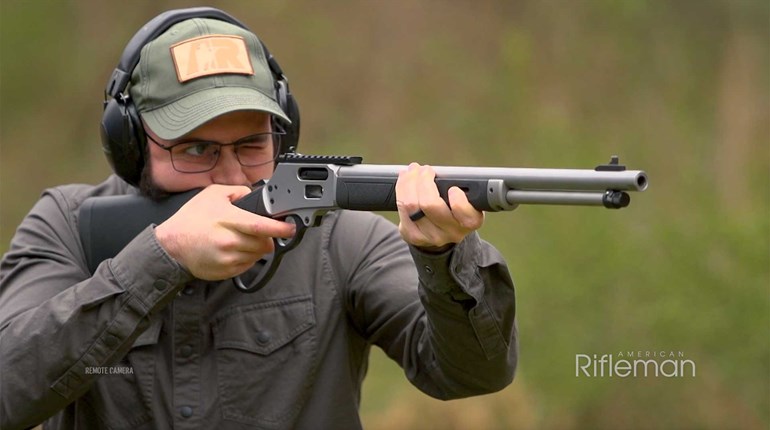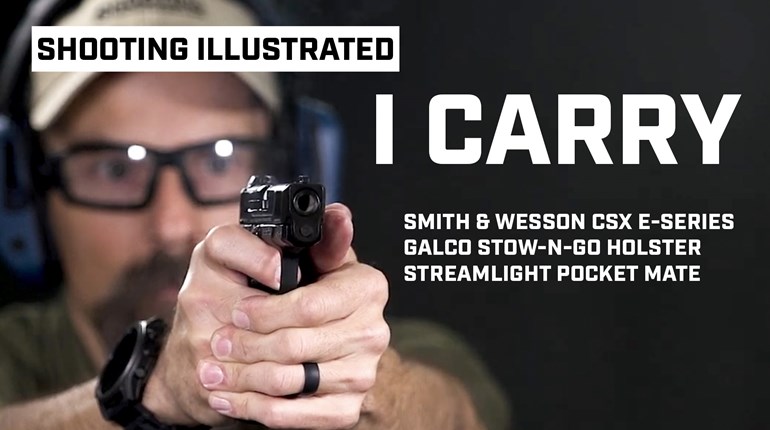
While whitetails inhabit my home state of Colorado, my family has always hunted mule deer. The McKibbin clan’s pursuit of muleys stands in stark contrast to what most American hunters do every year. The reality is white-tailed deer are the most commonly hunted big-game species in the country. Studies suggest the nationwide whitetail population stands at 30 million-plus.
The fact I had yet to kill a whitetail, America’s deer, made me the least-American hunter on the staff of American Hunter—at least that’s how I felt.
But all that changed last year when I tagged my first buck—not in Virginia where I relocated for work but in Texas.
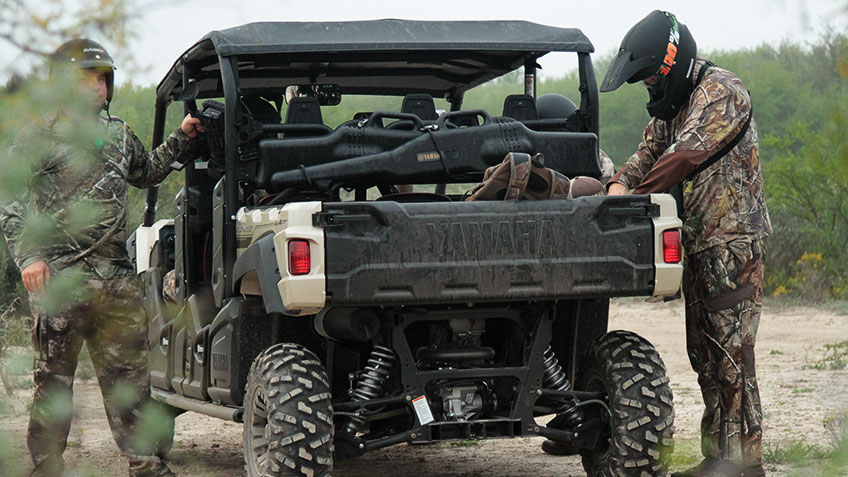
I have to admit the thought of deer hunting in Texas didn’t seem all that exciting to me when I heard we’d hunt from blinds. Glassing, maneuvering, positioning—the spot and the stalk so prevalent out West—are the fun parts I enjoy and love about hunting. In Texas, I’d replace all that with the dreaded “desk job” of hunting: sitting in a blind. Sitting sounds like a fisherman’s vacation, not a hunter’s adventure. And I must admit the idea of hunting with the aid of a side-by-side vehicle didn’t sound exciting, either. But I’d traveled to Texas at the invitation of Yamaha Outdoors, to hunt from blinds and to test-drive the company’s Viking VI, so I was going to make the best of it.
Despite any misgivings and preconceived notions, I‘d soon discover I had a lot to learn in Texas.
Going in Blind
Besides blinds, I’d also never used a vehicle on a hunt before; I’d ridden ATVs a couple of times but I’d never operated a side-by-side (SxS) unit. Though in some ways I viewed vehicles as unnatural and unnecessary additions to hunts (much like blinds), I wasn’t totally averse to using one. In fact I realized the Viking VI would be great to have on hand to assist with things that normally are a workout, like dragging and transporting a dead deer.
The first day in camp I did my due diligence and confirmed the zero of my rifle at 200 yards. I also familiarized myself with the Viking VI. Steve Nessl, the ATV and SxS vehicle marketing manager of Yamaha, gave me the rundown. We would ride in a Viking VI Ranch Edition along with Rusty Weed, Yamaha’s videographer, plus hunting gear and Rusty’s video equipment. So it was clear the vehicle’s extra seats and generous cargo capacity would come in handy.
Steve also would teach me the finer points of hunting from a blind, considering I’d never worked within the confines of such a cage. And Rusty would teach me how useful video playback can be (though I’m still uncomfortable being filmed).
The next morning before dawn, the three of us clambered out of the vehicle with gear in tow. As we made our way to the blind, I could tell, even by headlamp, it wasn’t at all what I expected. It was an open-air structure resembling a baseball dugout, except it was surrounded not by a manicured ballfield but by brush.
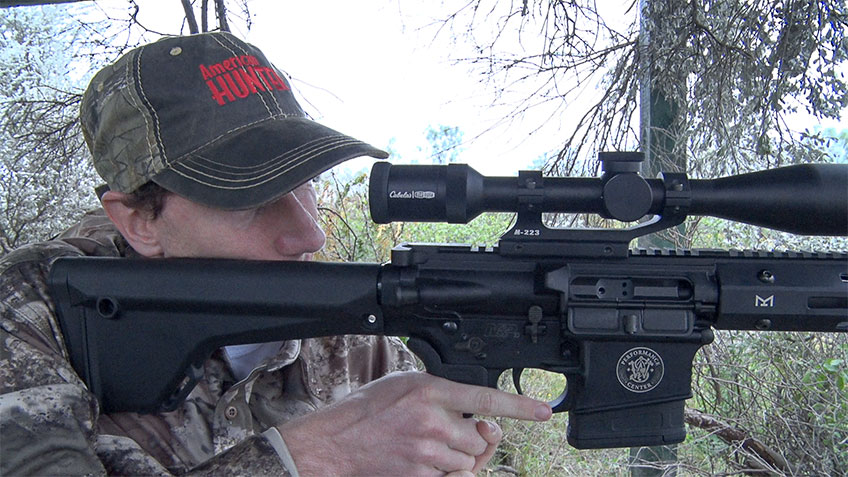
As the sun rose, I began to grow newfound respect for blind hunters. Blinds aren’t nearly as cushy as they appear on-screen. Sure, if you want to make a blind into a second home, you certainly can. Most of the time, though, they’re not that fancy. One thing I quickly learned is a blind creates a place where you can relax, a place where a hunter can drop his guard occasionally, unlike hunting in the open air during a spot-and-stalk hunt. A blind also allows for reflection, which is what I began doing as I contrasted my previous deer-hunting experience with this new way of hunting deer.
I considered what I was witnessing with whitetail behavior and how that related to my understanding of mule deer. It’s as if the alertness hunters maintain is inversely proportional to the alertness of the deer they’re pursuing. Most mule deer hunts are spot-and-stalk, so hunters are more alert. Yet mule deer tend to be more tolerant of disturbances. This is ironic, as the West is far less populated, so mule deer there generally have far fewer interactions with people than whitetails back East. One more thing to note: whitetails are far more alert and jumpy; when hunting them, concealment is key.
Then a whitetail snorted. This also was a new experience for me, as mule deer don’t snort. As the deer carried on, Steve explained constant snorting indicates a smart deer, one that knows enough to realize something’s awry.
I began to understand why blinds are a staple for whitetail hunters. In places like Texas, where there are about a million deer hunters, whitetails live in a seemingly paranoid state. Hunters have no choice but to use blinds or stands as a way to get within bow or firearm range, as dense foliage makes a close shot the only option. Attempting to make a move on a whitetail buck, on its turf, is more difficult than trying to maneuver in a blind in the dark amid familiar surroundings. I was beginning to feel like a blind just might be the thing to help me tag my first whitetail.
Semi-Prepared
Not only did my deer-hunting experience revolve around spot-and-stalk hunting mule deer, I’d only hunted with a bolt-action. To break that chain, I carried a Smith & Wesson Performance Center AR-10 chambered in 6.5 Creedmoor. Loaded with 143-grain Hornady Precision Hunter ammo, it seemed like a perfect whitetail setup. However, ARs have some mechanical trademarks that bolt-actions lack, and I didn’t realize or consider them until after the gun failed to function. Whether that’s my fault or the firearm’s I’ll never know, but I learned I needed to know my equipment, as my lack of familiarity with my rifle cost me my ideal first whitetail deer, at least in part.
I had my eye on a cool 7-point. Wade Middleton, who got us access to the land, said there were several good deer on the property. When he mentioned the 7-point he immediately got my attention. To me, a “trophy” deer is one with character, and unique antlers are the epitome of character. While most guys want symmetry, that’s the last thing on my list. And when Wade showed us trail-cam pictures of the 7-point, I knew it was the deer I wanted to hunt. I knew the buck was exactly what I wanted in my first whitetail: it was wide, tall and, most importantly, non-symmetrical.
Then came the part about blind hunting I couldn’t stand, and still loath: the waiting game.
I knew this 7-point buck was in the area. Wade said he was meticulous about his camera placement, so he knew exactly at which blind I needed to wait—and I believed him. But as the sun rose higher there was no sign of the buck. I wondered whether we did something to scare it off—maybe something like driving to a blind in a vehicle. Had I ruined my hunt before it even started?
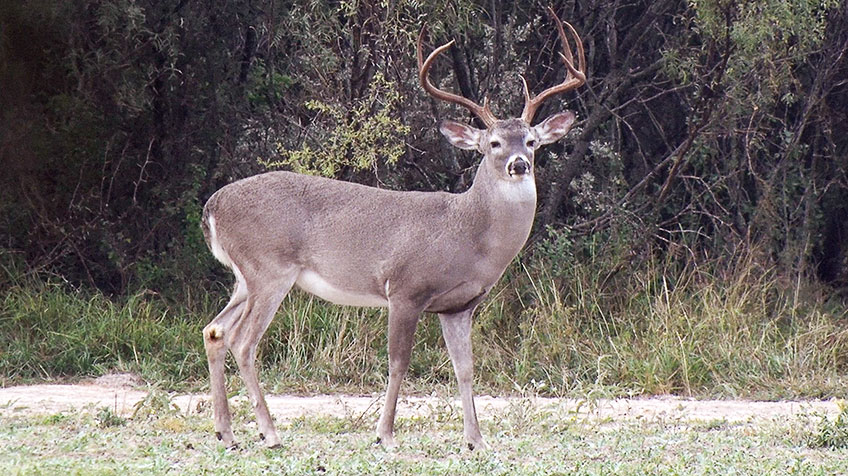
We watched several smaller bucks emerge from the tree line to mingle with the does and chase each other. We watched a sparring match between two bucks. But I was getting impatient. Where was the 7-point? Watching and waiting, unable to put boots on the ground and go look for him myself—that part was the most annoying.
It seemed like an eternity, but it was actually only an hour or so into our sit when the 7-point showed himself. I knew from trail-cam pics he was big. But as he began dispersing the smaller bucks I realized how large he truly was, both in body and in antler size.
We ranged him: 111 yards. I had a solid rest, and as the buck stood broadside, grazing, I centered the crosshair behind his shoulder about a third of the way up his body and squeezed the trigger.
The rifle’s roar sent the buck trotting to the right for cover. At a mere 111 yards, I somehow missed. He stopped broadside only a little farther from where we’d originally ranged him and I squeezed the trigger again. This time I heard a click—a light primer strike. I ripped back the charging handle … and induced a jam. I dropped the magazine, pulled the bolt back again and two rounds fell through the mag well. Reinserting the magazine, I yanked the charging handle back one more time and let the bolt slam home. Steve smacked the forward-assist for good measure. (I understood the concept of a forward-assist but didn’t utilize it as I never had to worry about it before.)
The firearm was ready to shoot once more. And even after all the commotion the buck hadn’t headed for the hills. He did, however, coincidentally plant his vitals squarely behind a bush as he stood broadside. I needed him to take a step—forward or backward—I didn’t care—before I could shoot again. He took that step and used it to turn 90 degrees and bolt back into the woods. I’m certain this behavior, apparently common among whitetails, is what spawned the phrase “hightailing it.” I’m also certain there is no more disappointing sight for a hunter. That white tail flashing vividly between trees, slowly disappearing from view, seemed like a taunt.
Tail of the "Tape"
I was hard on myself for missing. We’d ranged the deer at exactly 111 yards—not a long shot, considering others I’ve made. The prior afternoon I’d printed multiple sub-MOA groups at 200 yards. I knew I’d held right on the buck’s vitals. I even compensated for the slightly high point of impact considering my 200-yard zero, though at 111 yards it was negligible. No buck fever, either. I’ve shot bigger-bodied mule deer with no problems.
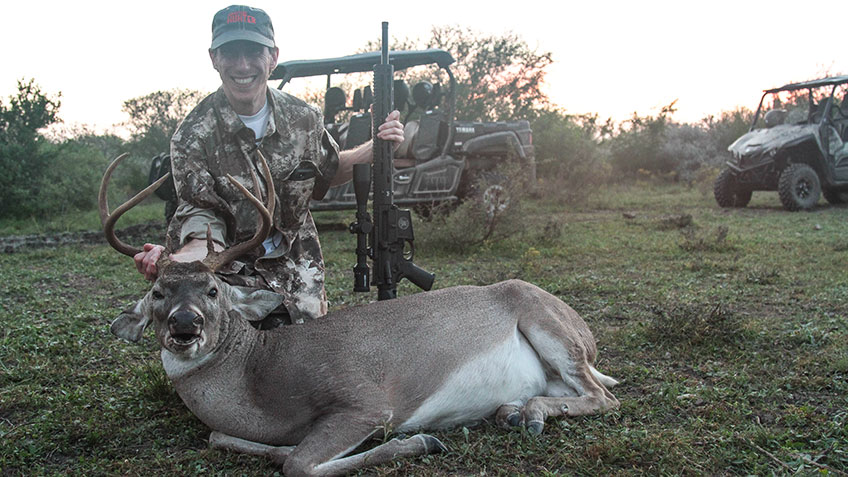
Back at camp, Rusty suggested we watch video playback to determine what went wrong. Most of the time, video helps determine where a hunter ran afoul. But when we reviewed footage, my shot looked more akin to something from a ghost-hunting show, not a hunting show. Even in slow-motion (Rusty knows how to run his gear, unlike myself), we saw no foliage disruption, no puff of dirt … nothing. I have no explanation for what transpired between switching off the safety before the first shot and watching the deer vanish. I have no excuses, either. That should have been a dead deer.
But flukes happen. It’s part of hunting. So I reconfirmed zero. Sure enough, I was dead-on at 200, shooting more sub-MOA groups. Still baffled, I re-zeroed my rifle at 100 yards in hopes of preventing any future missed deer.
Deer, Dogs and Deputies
We hunted that same blind again, and while we saw the 7-point, he never presented a clean shot. That’s one more thing I learned about whitetails, and deer in general: a “patterned” buck is about as consistent as a flaky hunting companion. Such a buck is “available” when something doesn’t interrupt it, but if something changes, who’s to say if it’ll show up again?
For fear of spooking the 7-point, we hunted a new spot from an elevated blind. We saw an old, aggressive 8-point. I wanted so badly to hold out for that 7-point but time was running out and light was fading. We ranged the 8-point at exactly 111 yards. I fired and hoped there would be no mystery.
The 143-grain ELD-X hit right behind the buck’s left shoulder. He took a couple of steps and collapsed. This time, the SxS carried back Steve, Rusty and me, as well as another passenger (in the cargo bed).
Honestly, I’m still not 100 percent sold on hunting from a blind. But I see why blinds are necessary, and the more I recount the story, the more I appreciate simply learning as much as I did.
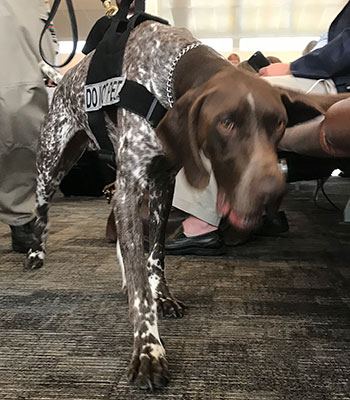
While traveling home I learned one more lesson: clean up well when using public transportation. Sitting in the airport, I noticed deer blood on one of my boots. It just so happened to be the day TSA dogs were training. I watched as the instructor gave directions to each handler. The dog and its handler made its way through the rows of terminal seats, with the instructor following closely, watching every move of handler and dog. Naturally, every dog stopped on my boot and alerted the officer holding its leash. So I explained to each handler what their canine partner was smelling. I presented my hunting license as proof. Some of them were fellow hunters and wanted to see pictures and hear the story of how I killed my 8-point.
With each show-and-tell, I appreciated my typical 8-point more and more. As I awaited my flight, I began to understand the plight of the whitetail hunter; to understand the “cage” Eastern hunters call a blind and why it works in places like Texas; to appreciate how important it is for a hunter to know his equipment before he has a problem, not after; and how a vehicle comes in handy when a hunter finally is successful. But I have to say, a whitetail hunter could make things easier on himself if he’d learn not to whiff that first shot.
Yamaha Viking VI Ranch Edition
The Yamaha Viking VI displays features trending in the side-by-side ATV market right now, as well as a few extra bells and whistles hunters should appreciate.
Standard features on the Viking VI include fuel injection, which helps start the 686cc, liquid-cooled SOHC four-stroke engine at nearly any altitude. A high-volume air intake system not only helps the engine run optimally but also makes the air-cleaner box accessible. The engine is fed from a 9.7-gallon fuel tank.
The engine is paired with Yamaha’s belt-driven Ultramatic transmission. This dual-range unit features high and low drive, and reverse. Shifts go unnoticed largely due to the system’s automatic centrifugal clutch that keeps constant tension on the drive belt, ensuring there is no slippage of gears when shifting. This clutch also creates the engine braking Yamaha is famous for, as it arrests momentum to make steep descents manageable—and less nerve-wracking.
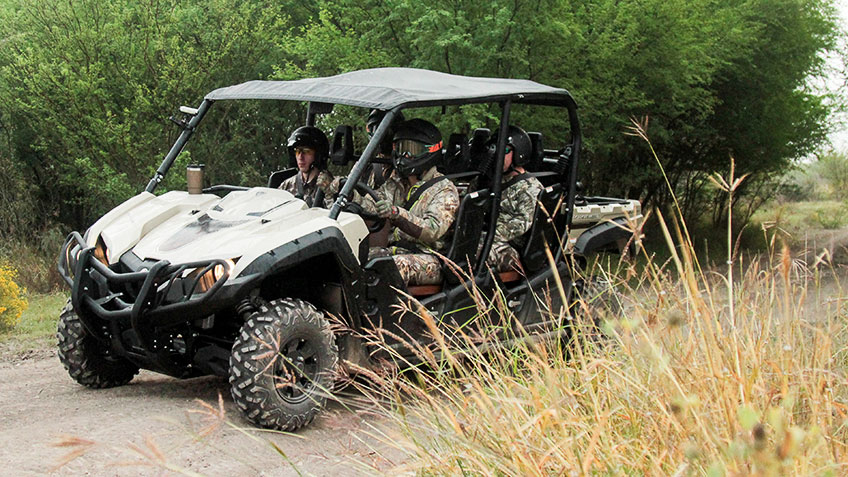
Yamaha On-Command 4WD consists of a three-way locking differential and includes 2WD, limited-slip 4WD and 4WD fully locked differential.
The Viking VI can haul up to 600 pounds in its cargo bed and tow up to 1,500 pounds. With a clearance of 11.4 inches and electronic power steering, maneuvering the vehicle isn’t a problem. A steel skid plate under the frame protects components from damage while four-wheeling.
Keeping the driver informed is a digital LCD display including a speedometer, odometer, dual trip meters, an hour meter, 4WD status, transmission position, a clock and a fuel gauge.
The Ranch Edition we used on this Texas whitetail hunt includes extras like aluminum wheels, over-fenders, a front brush guard, soft sun top, center rearview mirror, plenty of storage including under-seat bins, a bed grab bar and eight cup holders.
One advantage of a side-by-side configuration over a standard four-wheeler is extra room, and the Viking VI has plenty. It’s capable of transporting six passengers and loads of gear. All passengers ride safely with three-point seatbelts. MSRP: starting at $15,599; yamahamotorsports.com.













